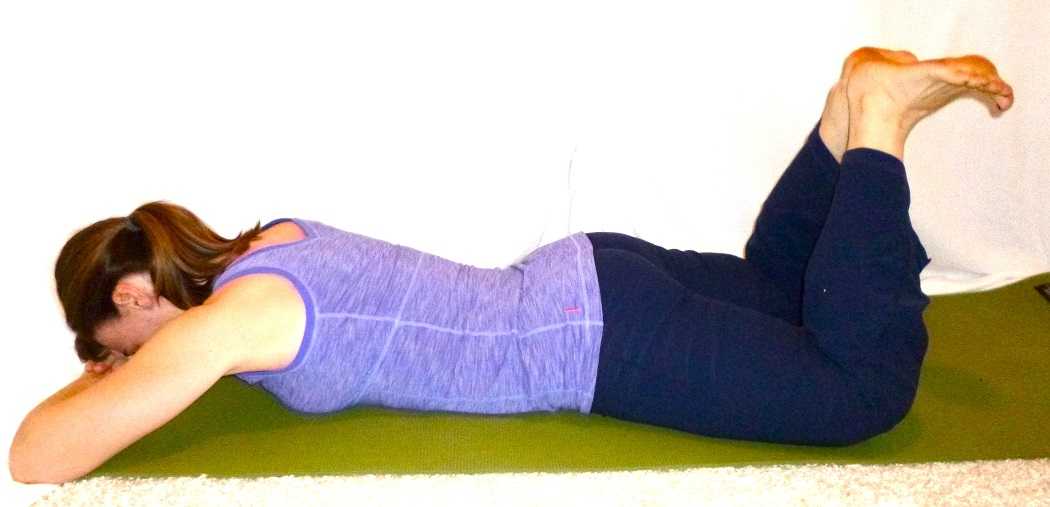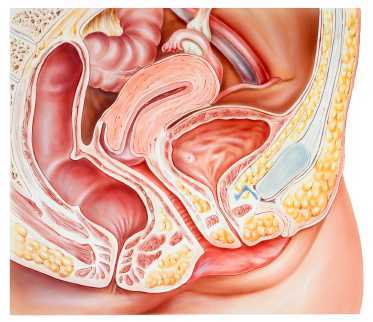Even after teaching for a couple of decades, both in graduate level courses and in continuing education settings (live and online), I am humbled by all there is to learn and relearn about how to teach well. We all teach every day, regardless of what setting or roles we work in, and are required to share our thoughts and knowledge with respect, equanimity, and non-judgement. After teaching a course last month, I received feedback about an important topic that was not clearly addressed from an instructional or clinical standpoint, and the participant who brought it to my attention agreed to share her experience so that we as pelvic rehab providers can do a better job of addressing the issue when needed. The following post was written by Erin B. after I encouraged her to share her own thoughts about the issue.
"Having recently participated in the PF1 class after several years out of the classroom-style of continuing education, I made a few observations I felt compelled to share. (I do want to preface this with the fact that I am fully aware that my own insecurities play a role in my experiences and I recognize that they may alter my judgment of the situation.)

I am 5' 4" and currently 240 pounds. Although that is 50 pounds lighter than I was 6 months prior to attending this class, it is still significantly larger than 90% of the class participants, lab assistants and instructors. I am not someone who feels that fat is healthy. I do not feel that you need to act like I am in as good of shape as anyone else in the room. However, I do feel that there are certain assumptions made about me that are based on my physical appearance alone. Take a minute and think about your first reaction to seeing a person who is obviously overweight. (I do realize that I have made my own assumptions about some of you as well!) Just because you are much thinner and more fit looking I assume you exercise regularly, you always eat healthy and you judge me negatively for my appearance. I do know that my assumptions about you may be just as wrong as what I believe you assumed about me. However, when I see that the larger people in class have placed themselves more to the back of the room, when I have a hard time finding a lab partner and when the lab instructor struggles with how to say to the partner that got stuck with me "things may be different on her", I begin to feel like I am taking something away from the class experience for everyone else. I do not want to hinder another clinician's learning process so I don't push anyone to be my partner, but then I am actually denying myself the learning opportunities I came for. Not to mention that I may be denying the other participants the opportunity to learn how to handle a client that may look and feel like me.
The reality of our world is that there is a very large obese population. I firmly agree this leads to a multitude of chronic illnesses and astronomical medical costs for the individual and our society as a whole. It does need to be addressed on a large scale. However, we as clinicians don’t know where these individuals are on their weight journey. For someone like me who has made drastic lifestyle changes to move me in a positive direction but have not yet gotten my appearance in line with the "norm" that the health care professionals, the media and society are pushing, your response to me can be devastating to my progress, my hope and my desire to continue toward a healthier lifestyle. Again I want to acknowledge that this is as much my problem as it is for those around me and I am addressing this as well. But please have the awareness that an obese person above all is a PERSON FIRST! Then their physical size becomes just another item on the list of "facts" about them, instead of a source of anxiety and separation. Approaching an obese person with respect, acceptance, honesty and openness not only puts them at ease, it also strengthens the rapport that is so crucial in pelvic rehabilitation.
Although I was born and raised in the north east, I now live in Alabama, home of corn bread, fried chicken and sweet tea. The population I deal with is more likely to be at least overweight if not truly obese. So, quite honestly, the practical instruction of how pelvic floor evaluation and treatment may be different with the obese patient would be directly beneficial to my practice. This might include openly addressing in labs how to assess/reposition an obese patient will give each therapist an awareness and confidence when approaching this population and may minimize the patient's embarrassment and keep the doors of trust and communication open. Or taking a moment to recognize the larger participants in the classroom setting and professionally suggesting during a lab session how they can reposition themselves and still affectively achieve appropriate assessment/treatment for the patient would make the transition from class to the reality of the clinic more smooth. Also, taking a moment to offer suggestions for what the obese patient who can’t physically reach their perineum or even palpate the pubic symphysis and or coccyx and doesn’t have a willing partner to assist can do to effectively complete the rehab activities suggested. You have to admit, this is not an easy specialty of practice to broach in the first place, and anything to take the pressure off of the clinician and or patient is helpful!
I so greatly appreciate the respect and professionalism the many delicate topics related to pelvic health are addressed in this program. I would also appreciate that same respect and professionalism when it comes to the reality of the many different body types that are the represented in our practices!"
Thank you to Erin for sharing her thoughtful suggestions, and reminding instructors and fellow course participants that an open, curious and helpful approach is needed for all situations. We at the Institute will address this issue among our instructors so that we can provide more clear guidance regarding patient and provider positioning. Stay tuned for a blog post about helpful positioning and communication tips for working with patients who are obese.
Today's post is written by faculty member Allison Ariail, PT, DPT, CLT-LANA, BCB-PMD, PRPC. You can join Allison in her Rehabilitative Ultrasound Imaging: Women's Health and Orthopedic Topics course, which takes place in Baltimore this year, June 12-14.
Since the mid 1990’s the POP-Q has been used to quantify, describe and stage pelvic organ prolapse. A series of 6 points are measured in the vagina in relation to the hymen. In a recent years, translabial ultrasound imaging has been used to look at the pelvic organs and the pelvic floor. A skilled practitioner can view pelvic floor muscle contractions, as well as Valsalva maneuvers and the effects each of these have on the pelvic organs. For example funneling of the urethral meatus, rotation of the urethra, opening of the retrovesical angle, and dropping of the bladder neck and uterus can be viewed using ultrasound imaging of the anterior compartment during Valsalva maneuvers. Pelvic organ descent seen on ultrasound imaging has been associated with symptoms of prolapse.

Until now the relationship between ultrasound and clinical findings has not been examined. A recent study by Dietz set out to see if there is an association between clinical prolapse findings and pelvic descent seen on ultrasound. Data was obtained on 825 women seeking treatment at a urogynecological center for symptoms of lower urinary tract or pelvic floor muscle dysfunction. Five coordinates of the POP-Q scale were measured and compared to ultrasound measures of descent. All data was blinded against other data obtained. Clinically, 78% of the women were found to have a POP-Q stage of 2 or greater. It was found that all coordinates were strongly associated with ultrasound measures of descent. The association was almost linear, particularly for the anterior compartment. This means that ultrasound measures can be used to quantify prolapse and be comparable to the POP-Q. Proposed cutoffs have been made for the bladder, uterus, and rectum in relation to the pubic symphysis.
It is exciting to see ultrasound use in the quantification and identification of more gynecological disorders. The use of translabial ultrasound imaging is growing and continuing to be researched. It is an exciting field to be a part of and I look forward to seeing where this research goes. I believe it will be used to help improve surgical procedures as well candidate selection for surgery. Join more for more discussion regarding translabial ultrasound imaging and learn how to view these images in Rehabilitative Ultrasound Imaging for the Pelvic Girdle and Pelvic Floor in Baltimore this June!
Dietz HP, Kamisan Atan I, Salita A. The association between ICS POPQ coordinates and translabial ultrasound findings: implications for the definition of ‘normal pelvic organ support’. Ultrasound Obstet Gynecol. 2015; April.
Today the Pelvic Rehab Report presents a conversation with Dr. Kimberlee Sullivan, DPT. Kimberlee was kind enough to share her thoughts on the importance of pelvic rehab and her experiences in the field.

Tell us about your clinical practice.
Sullivan Physical Therapy is an outpatient private practice physical therapy clinic in Austin, Texas that specializes in women's and men's health. We have seven physical therapists who evaluate and treat pelvic floor dysfunction, pre and postpartum, pediatric bladder and bowel dysfunction, and lymphedema. Our practice takes a full body approach that looks at a person from different aspects to analyze how various factors in their life may be contributing to their symptoms. We also strive to be an integrated health care practice that communicates well with both the patient and their referring physician or multiple practitioners. The physical therapists work closely with the patient's entire medical team in order to provide the best care.
How did you get started doing pelvic rehab?
I attended physical therapy school with the idea that I would work in sports medicine. As the daughter of a college football coach, my whole life had been surrounded by athletes and this made sense with my Bachelor's in Sports Medicine. Fortunately, I had the wonderful opportunity to be able to have one of my clinical affiliations at a women's health clinic. This was very rare for the early 2000's. I thought that I would be able to work with female athletes or those women who were having back pain with pregnancy. I had no idea what I was in for nor that I would instantly fall in love with it. There is no better feeling in the world than helping someone with such private matters as incontinence, constipation and pain with intercourse. I feel lucky every day that a flip of the coin allowed me the opportunity that became my professional passion.
How do you feel the addition of pelvic rehab provides a unique service to your community?
There are so many people that suffer in silence with pelvic floor dysfunction. It is unfortunate that patients often feel embarrassed by their symptoms and that they are all alone. It is so rewarding to be able to help patients achieve their goals that relate to some of the basic aspects of life such as bladder function, bowel function, and sexual function. Patients who once felt that they would have to live with their pelvic symptoms now have a place to go that can help them reach their goals.
What skills have their therapists been trained in that they have found most helpful?
I asked the six women I work with and they felt what was most helpful was connective tissue manipulation, visceral mobilization, orthopedic approaches for treatment of the spine, pelvis and hip, understanding of how hormones can influence pelvic pain, lymphedema, pre-and post-natal care and specialized care for the male patient.
In addition, our therapists are constantly pushing themselves and each other to learn more and bring themselves to the next level. They communicate not just with local physicians to learn more about the pelvic floor, but they communicate with the top physician's in the country that treat pelvic floor disorders. An example of this is my coworkers' blogs of "Blog about Pelvic Pain" and "What is Up Down There?" We try to keep our finger on the pulse of physical therapy treatment but at the same time educate the public as we learn.
Do you find that medical providers and referral sources are still surprised at all the of conditions pelvic rehab providers can treat?
Absolutely! This will probably never end as our profession evolves. But I have to say it is much better and is getting better. I see this in the number of patients we see. Ten years ago we were fighting to have providers understand what we could offer their patients and we were seeing about 7 patients a week. Now we see around 220 patients a week and have providers calling us asking our opinion on their patients. It has been a long road, but I think as we get better as a profession communicating what we do we will see our practices continue to grow. It is exciting not only to inform providers of what we do, but also to see their faces and the faces of other physical therapists when we tell them what we do. "You do what? And it works?" Yes I do AND yes it does!
What are challenges you face managing a clinic? What are some things that have helped you get over these challenges?
I think the main challenge is the ever changing challenge of reimbursement. We chose to have a clinic that was contracted with insurances in order to provide less stress to patients who were already under so much stress dealing with their current conditions. However, insurance companies have difficulty recognizing that care can sometimes take a while for someone who has been suffering with pain for years or that a specific type of treatment could be beneficial to a patient having trouble understanding how to contract or relax their pelvic floor muscle. With all the new Medicare and other insurance paperwork requirements, I have to remind my staff why we do all of this extra work. At the end of the day the patients' care should and does always come first. As a team we participate in a lot of webinars and research to make sure that even if insurance changes, we will be here for the patients and provide them with the best care.
What aspect of your program do you look forward to further developing?
As we continue to grow and develop new programs we have discovered that there are a lot of physical therapists who are not as lucky as we are to have seven physical therapists to work with. We have a physical therapist office that is always full of discussion, sharing ideas and challenging current thought. We have had several physical therapists and physical therapist assistants come to visit us in Austin and asking to stay connected to that type of environment. For this reason, we have established a mentorship program for licensed physical therapists who are not in Austin but would like to have access to an enriching environment to efficiently grow in Women's and Men's Health Physical Therapy. In addition, we are looking at different possibilities for conducting research at the clinic in order for us to contribute back to our profession.
How has H&W helped you reach your goals?
Herman & Wallace has provided me with extraordinary information and skills in order to better serve my patients and also challenge my staff. Herman and Wallace provides classes that are up to date and constantly evolving. The instructors provided by Herman and Wallace are highly skilled therapists who are able to answer questions and challenge you to be a better physical therapist. We especially find value in the excellent lab experiences provided by Herman & Wallace.
If you could get a message out to other providers about pelvic rehab, what would it be?
Pelvic floor physical therapy is very different from orthopedic physical therapy in that both internal and external work is performed and that treatment goes so much further than instructing patients to perform kegels. It is usually of sensitive nature and patients need to feel comfortable knowing there are providers qualified to address their concerns. Every patient is different and so is treatment. I would also encourage providers to ask all of their patients if they have any bladder, bowel, or pelvic pain issues and if the answer is yes to assist them in finding the help they need.
If you are in a solo practice, find a way to stay connected with other practitioners. There is so much information coming out that it is impossible to stay up to date without accessing resources or other practitioners. I feel very fortunate to work in a practice that is set up for the physical therapists to constantly ask questions and bounce ideas off the each other.
If you could get a message out to patients/ the community at large about pelvic rehab, what would it be?
Recognize that the pelvis is just another part of your human body, just like your low back. Do not be fearful about discussing this region of your body. You would be surprised at how many other people are dealing with the same issue. Pelvic floor physical therapy can be a very effective conservative treatment for those suffering from bladder and bowel dysfunction as well as pelvic pain. Many people suffer from these diagnoses and do not know there is treatment available. Even though pelvic floor physical therapy may sound scary for those that are not familiar, an experienced physical therapist should put you at ease by walking you through step by step of what to expect and always making sure you are comfortable before proceeding. Pelvic floor rehabilitation can be powerful in changing and eliminating pelvic floor symptoms. For many patients, this is life-changing so please continue to advocate for yourself.
Today's post is written by faculty member Martina Hauptmann, who instructs the Pilates for Pelvic Dysfunction, Osteoporosis, and Peripartum course. Come learn how to apply Pilates in your practice this September 19-20 in Chicago, IL!
Treating the incompetent pelvic floor (urinary incontinence and pelvic organ prolapse) is a staple of therapists who have specialized in this complex area.
Ever since Dr. Arnold Kegel published his research “A Non-surgical Method of Increasing the Tone of the Sphincters and Their Supporting Structures” back in 1942 women have been strengthening their pelvic floor by conscious contraction of their perineum by either squeezing or lifting.
Another method to strengthen the pelvic floor is through the muscles that are extrinsic synergists to the pelvic floor musculature. The hip abductors, adductors, extensors and lateral rotators are extrinsically linked to the pelvic floor musculature. Except for one of the hip lateral rotators, the obturator internus, which by its anatomical attachments is actually an intrinsic synergist of the pelvic floor.
Pilates is an exercise method that seeks to increase a client’s strength, posture, control, and body awareness through precise exercises. The Heel Squeeze exercise is an excellent exercise to indirectly strengthen the pelvic floor via isometric contraction of the hip lateral rotators and hip extensors.
To perform the Heel Squeeze exercise, have the client lie prone with their legs hip distance apart, knees bent. The heels are touching and the toes pointing away from center. Draw the client’s awareness to their abdominals and have them slightly lift their stomach away from the mat. Instruct the client that she should continue with this contraction of her abdominals. Then as she exhales, the client squeezes her heels together and presses her pubic bone down into the mat. The client should hold this contraction for 5 seconds and do 8-12 repetitions.

Today we are happy to share an interview with Blair Green, PT! Blair brings her experience as both a practitioner and a clinic owner to the field of pelvic rehabilitation, and you can check out her insights below.
Tell us about your clinical practice
I am an owner of One on One Physical Therapy, in Atlanta, GA. My patient population is primarily patients with pelvic pain of varying degrees. I blend my skills and knowledge of pelvic health with orthopedic manual therapy and I am able to provide a comprehensive approach to treating these patients. I also work closely with postpartum women for rehabilitation following childbirth, primarily in an orthopedic sense. I like to work with women who experience diastasis recti following pregnancy and who want to return to an active lifestyle after having children. One other area that interests me is the relationship between autoimmune disorders / endocrine function / pelvic pain. I hope to expand on this in the future.
How did you get started doing pelvic rehab?
I started doing pelvic rehab after taking a course linking orthopedic manual therapy with pelvic floor dysfunction. At the time I was working with many pregnant and postpartum women and hoped to gain some insight into the role of the pelvic floor in this population. I was the only orthopedic PT in the course. At that point I realized I could not treat the hip / SIJ / lumbar spine in isolation and I needed to consider the role of the pelvic floor with this population. This opened many doors for me and I soon found myself fully entrenched in the world of pelvic floor rehabilitation.
How do you feel the addition of pelvic rehab provides a unique service to your community?
In Atlanta, many PTs address orthopedics but very few address the pelvic floor. I am able to treat patients from all over the state of Georgia. In addition, I have spent a great deal of time educating my colleagues and DPT students on the role of the pelvis and pelvic floor and why it cannot be ignored in many cases of low back, hip and pelvic pain. I also consult with different organizations in Atlanta who work with pregnant and post partum women. I am able to talk to their clients and staff members about the role of physical therapy in Obstetrics.
What skills have their therapists been trained in that they have found most helpful?
What skills do I find most helpful? I think they are all helpful. Every patient is different. Some require extensive hands-on manual therapy, others need continual supervised exercise instruction. For some, education is key. I have certifications in Pilates and Trigger Point Dry Needling. Both of these were “game changers” for me. More recently I am incorporating a lot of work by Paul Hodges, Diane Lee, Julie Wiebe and Lorimer Moseley. I am becoming very integrative and holistic in my approach and I enjoy this.
Do you find that medical providers and referral sources are still surprised at all the of conditions pelvic rehab providers can treat?
I think they are surprised that physical therapists can do so much to help women with pelvic pain. Most medical providers I meet are so thrilled to have a PT to work with. A few years ago, they never would have imagined that physical therapists would be so crucial in the plan of care for these patients.
What are challenges you face managing a clinic? What are some things that have helped you get over these challenges?
One of the biggest challenges I face is how to continue to treat patients and still have time to focus on growing my business, training new PTs and educating referral sources on what we do. There is just not enough time to do it all! It’s hard to prioritize.
What aspect of your program do you look forward to further developing?
Our pelvic floor team is growing. It was just me for a long time. Now we have 3 PTs that treat pelvic health and I hope we can continue to grow this team. I love to learn from my colleagues and I love that we can all work together to get the word out about One on One Physical Therapy and what we do.
How has H&W helped you reach your goals?
I am always impressed by the courses presented by H&W. I started in PF 2A and have worked my way through many classes. I love the instructors and have used them as mentors at times, always looking for their clinical pearls. In addition, one of my PTs I recently hired I met at a H&W course. We were lab partners. We stayed in touch for 5 years until the timing was right for her to come on board!
If you could get a message out to patients/ the community at large about pelvic rehab, what would it be?
I would want to get the message out there that incontinence, pain with intercourse, constipation, abdominal pain, post-pregnancy pain - none of these conditions are normal. Pelvic health PTs can help treat these problems and teach you many tools so that you do not have to live with these symptoms. I love to joke with friends and patients that I am a “vagina physical therapist.” It’s humorous but people definitely inquire more. I am able to get my message out there!
This question is one that, a decade ago, may have made more sense to ask, as very few male therapists were engaged in the world of pelvic rehabilitation. Most pelvic rehabilitation practices still stem from programs developed in "Women's Health" so it's logical to see more female patients being treated, usually by female therapists. We are at an exciting time in the healing professions, and particularly in pelvic rehabilitation, when choice of provider may come to be based more on experience, personality and qualifications of the treating therapist than on the provider's or patient's gender. At the Institute's most recent entry-level Pelvic Floor 1 (PF1) courses, 2 male therapists were in attendance at 2 different PF1 courses on opposite sides of the nation. This shift (we tend to have an occasional male therapist within the pelvic floor series courses) has been noticed, and at the Institute, we have committed efforts at exploring if and how this shift affects our coursework. For example, are the instructors comfortable, are the female participants cool with it, and do the men feel welcomed? To find out a little more about the subject, I bring your attention to a few of the men who are currently representing the field of pelvic health.
Herman & Wallace Institute faculty member, Peter Philip, has treated both men and women in his practice for years. This treatment involves internal assessment and intervention when needed, and Peter approaches all of his patients with the same matter-of-fact, clearly defined consent. As a private practice owner, it makes sense that Peter is able to retain his patients regardless of the condition for which they are seeking care. Having to refer a patient to another therapist or clinic would negate the ability for a therapist to provide comprehensive care. On his website you will find a listing of women's health issues described next to sports, work, and other lifestyle injuries.
I posed the following question to Jake Bartholomy , physical therapist in Seattle, Washington: "Why is it so important for a male therapist to be involved in pelvic rehab, regardless if the goal is to focus on working with male or female or other gendered patients?" Jake's response reflects the value of offering choices to the patients he serves: "I believe it's important for people to have a choice in their therapist. Many people are shy and nervous to discuss their pelvic issues and if male or transgendered patients are more comfortable working with a male therapist, I'm proud to offer that service in the Seattle area."
I recall meeting Daniel Kirages, physical therapist and clinical instructor at the University of Southern California, at a male pelvic floor course years ago. When he introduced himself to the group, he joked that he was there as the token male "to break up the girl party." While this joke has stuck with me, it also drives home the point that it takes courage to show up at coursework which has previously been dominated by female therapists. Daniel has been involved in research, teaching in the classroom and online, and lecturing nationally about pelvic rehab.
In my experience as an instructor, the male therapists who attend pelvic rehab courses are exceptionally grounded, open-minded, and exude a quiet confidence that seems necessary for working with sensitive issues surrounding pelvic rehabilitation. Just for the record, we absolutely do believe that male therapists belong in pelvic rehabilitation coursework and practice, and we at the Institute are going to continue to explore how we can support all genders working in this much-needed, and good work. If you are interested in learning more about the course series or any specialty topics courses, check out our course listings here.
Today on the Pelvic Rehab Report, we hear from Dustienne Miller. Dustienne wrote and teaches the Yoga for Pelvic Pain course, which is available in Cleveland, OH on July 18-19, and in Boston, MA on September 12-13.
"It feels like my pelvic floor just sighed."
Grounding in Mountain Pose

As musculoskeletal professionals, we have a sharp eye for postural dysfunction. We explain to our patients that the ribcage is sheared posteriorly to the plumb line and how gravity magnifies forces at specific structures. Some physical therapists perform the Vertical Compression Test (VCT) to allow the patient to feel the difference between their typical habitual posture and a more optimally aligned posture. This works well to “sell” your patients on why their newly aligned posture allows for more efficient weight transfer through the base of support. In addition to the VCT, I utilize Tadasana, or Mountain Pose as an additional kinesthetic approach to postural retraining.
Last week in the clinic, I was teaching my client postural awareness using Tadasana. I asked her to close her eyes, or lower her gaze if she was not comfortable closing her eyes. Working from the ground up, we started bringing awareness to her base of support. She noted that she was standing with her weight mostly in her heels. When I encouraged her to bring her weight forward, hinging from the talocrural joint, she had an “aha moment.” She said, “It feels like my pelvic floor just sighed.” She was unaware that her habitual posture was to stand with her weight mostly posterior to plumb line, thus encouraging her posterior pelvic floor to remain in an overactive state. Once she balanced her body from the ground up, she felt a major release in her holding patterns.
At our follow-up session, the client remarked that her postural awareness increased dramatically. She was surprised at how often her pelvic floor was in a habitual pattern of over-firing. Additionally, she reported increased awareness while practicing standing yoga postures during class. She feels more in control of her body after experiencing embodied optimal alignment and has had success with carrying over postural awareness outside of the clinic setting. Self-awareness and empowerment are two major goals of my physical therapy practice, and using yoga to achieve these goals makes my clinical practice even more enjoyable.
For more info on the Vertical Compression Test, click here. For detailed instruction on Tadasana, click here.
Much has been made of the research indicating that a Caesarean section has a protective effect on the pelvic floor, with some women requesting a CS in order to avoid pelvic floor dysfunction (PFD). This practices raises concern about an elective approach to CS versus natural vaginal birth, as CS are by no means without risk to the mother, the fetus, and to the neuromusculoskeletal system. Recent research contributes to this discussion by assessing several variables including quality of life factors and pelvic dysfunction following either a CS or natural vaginal birth. Twenty one women who had given birth in the prior 36 months were recruited from daycare facilities. Subjects were categorized into normal vaginal delivery (NVD) or Caesarean section (CS). Subjects were only included if they gave birth to singletons, had not previously participated in pelvic rehabilitation, or if they did not had a history of pelvic surgery, neurologic issues or trauma that affected bowel and bladder function. Outcomes tools included the SF-36, and the Pelvic Floor Distress Inventory (PFDI). Within the PFDI, outcomes tools assessed urinary, colorectal, prolapse, and pelvic floor functional impact.

Nearly 70% of the women in the group studied were between the ages of 30 and 39, with ages ranging from 21-45. The number of subjects who had given birth vaginally was 16, by Caesarean section, 5. The authors report that approximately 75% of their subjects were Caucasian, had a household income of 70,000 or more, and nearly 80% had at least a four-year degree. The women in the CS group reported higher rates of urinary incontinence and pelvic pain (90% and 67%, respectively) when compared to the NVD group (50% and 23%). Women who gave birth via CS also had higher mean scores on the Urinary Distress Inventory, Colorectal-Anal Distress Inventory, and the Pelvic Organ Prolapse Distress Inventory. The authors also noted a correlation between pelvic organ prolapse and body mass index (BMI) greater than 25.
This research contributes to the literature about birth mode and pelvic dysfunction, and the study conflicts with other data that describes a protective effect of Caesarean birth mode on the pelvic floor. While avoiding vaginal delivery may indeed help reduce some injury to the pelvic floor, this study, even though the sample size was not large, reminds us that CS delivery can be associated with pelvic dysfunction and symptoms. This study was different from many prior reports in that the subjects were surveyed in the chronic rather than immediate postpartum period. If you are interested in learning more about postpartum rehabilitation, check out the Institute's offerings on this page: http://hermanwallace.com/postpartum.

Bowel dysfunction is a common condition with potential for devastating limitation in a person's quality of life. Constipation, one type of bowel dysfunction, is often associated with an ability to properly coordinate the pelvic floor muscles during an attempt to empty the bowels. Instead of the pelvic floor muscles lengthening to allow the anorectal angle to increase (reducing the "bend" in the distal part of the rectum) the pelvic floor muscles might contract and thereby restrict proper emptying of the bowels. When this "opposite" or "paroxysmal" contraction occurs, a patient may be diagnosed with paroxysmal pelvic muscle function, also called dyssynergic defecation because of the lack of coordination in the muscles.
A recent study demonstrated that biofeedback therapy can be an effective tool in improving pelvic floor function for patients who demonstrate dyssynergic defecation. Magnetic resonance defecography (MR defecography) was measured prior to and after intervention, with variables of anorectal angle and perineal descent among those studied. Standard therapy was administered to 11 patients diagnosed with dyssynergia, and 11 patients received biofeedback therapy. All patients met the Rome diagnostic criteria for functional constipation, and all patients had diagnostic testing with resultant evidence of dyssynergistic muscle patterns. In addition to the MR defecography as a pre- and post-test, patients completed assessments of symptoms, quality of life, and severity of depression.
Standard therapy consisted of instructions in bowel habits, daily exercise such as walking, diaphragmatic breathing, fiber and fluid intake, defecation techniques, and timed toileting (such as attempting bowel movement 30 minutes after eating). Therapy occurred over a period of 3 months with at least once per week phone supervision. The patients in the biofeedback group were instructed in concepts of dyssynergia and in contract-relax training. Rectal sensory training with a rectal balloon was utilized if the patient had poor sensory perception. Patients were trained how to increase intrabdominal pressure while relaxing the pelvic floor muscles. They were also instructed in pelvic floor muscle strengthening, relaxation, and coordination, and were asked to complete home exercises three times per day for 10 minutes. Clinic sessions occurred at twice per week for 12 visits, then once per week for 6 visits, or a total of 18 visits over 3 months.
The authors found that paradoxical contraction and perineal descent with attempt to defecate improved significantly in the treatment group. Constipation symptoms, and depression and several quality of life scales also improved in the treatment group. Interestingly, the sense of incomplete emptying improved in both the treatment and the standard care group. While the results of the intervention are very positive, it would be interesting to include abdominal wall massage, a common technique employed to improve bowel function with constipation. If the patients demonstrated a tight pelvic floor with dyscoordinated patterns of movement, perhaps manual therapy to release tension or any pain that was present may have also been appropriate. As this is the first study to demonstrate through MR defecography an improvement in dyssynergia following biofeedback therapy, the study is very valuable to pelvic rehabilitation therapists. If you are interested in learning more about bowel dysfunction, you can start with the Pelvic Floor 2A course, which instructs bowel dysfunction including dyssynergistic defecation. The pelvic floor series courses sell out quickly, and the next opportunity to take this course is in St. Louis in October. You can also still find seats in the 2A continuing education course in the December courses taking place in Boston and in La Jolla.

The following is a message from Nari Clemons, the instructor of Herman & Wallace's new Meditation for Patients and Providers course. You can join Nari at Touro College in New York this July 19-20 at Meditation for Patients and Practitioners - New York, NY!
What doesn’t meditation do? And why aren’t we meditating, already?
I’ve heard it said that if all the benefits of exercise could be placed in a pill, it would be the most powerful prescription. I’m thinking that the same could be said for meditation. We hear little snippets of it as we scroll through the news: meditation for heart disease, meditation for blood pressure, meditation for decreased anxiety. Well, here is yet another study:
Researchers used fMRI technology to examine the brain in 50 people who had been meditating for an average of 20 years and 50 non- meditators. Both groups had the same number of men and women, with ages ranging from 24 to 77. The participants’ brains were scanned, and while age did related to gray matter loss, it was better preserved in those who meditate. **
Americans are living longer, but rates of Alzheimers and Neurodegenerative disease rates are going up. Well, meditation is something you can do to keep on top of your cognitive game. So, why aren’t people meditating? When I ask patients this, I often hear, “I don’t know how” or “I tried it once and I didn’t like it”. I think there is a misconception that mediation should be valued if someone had an experience of bliss or if they are “good at it”.
In fact, meditation is like exercise; it is a benefit that grows as you use it more. It can be hard at first when the mind is not used to being calm or more still. It is not a one-time-use kind of fix. Like exercise, as you do it more, you see more benefits, and you come to like it more. Not everyone who is starting an exercise program will want to train for marathons or be a ballerina or try cross fit. Just as there are different personalities and starting points with exercise, the same can apply to meditation.
In the MPP Herman Wallace course, Meditation for Patients and Practitioners, we break down a lot of the mystery behind learning and teaching meditation. We use techniques of different lengths of time and different aims. We discuss how to pick which technique for which patient or even how to choose a technique for the same patient in a different situation. Going further, we discuss ways to use meditation as a health care provider, so you can share in the benefits of a practice and keep yourself refreshed about your practice. Participants in the course get lots of lab time to develop comfort level deciphering which technique to use and be comfortable teaching and using meditation in their own lives. We also provide a CD with many of the techniques that you will be able to use to refresh course material or to recommend to participants for use in their own homes.
As providers we know that “carrying our patients home” by thinking of them when we leave work or staying sad or anxious about something that happened that day at work is not actually helpful to our patients. Or we may realize we are tired or worn out from the stress of our jobs. Yet, we really don’t know what to do about it. In the MPP course, we discuss ways to keep your job in the space it belongs in your life. This can help practitioners to live a more balanced life, as well as being more present at work.
By accepting you will be accessing a service provided by a third-party external to https://hermanwallace.com/










































